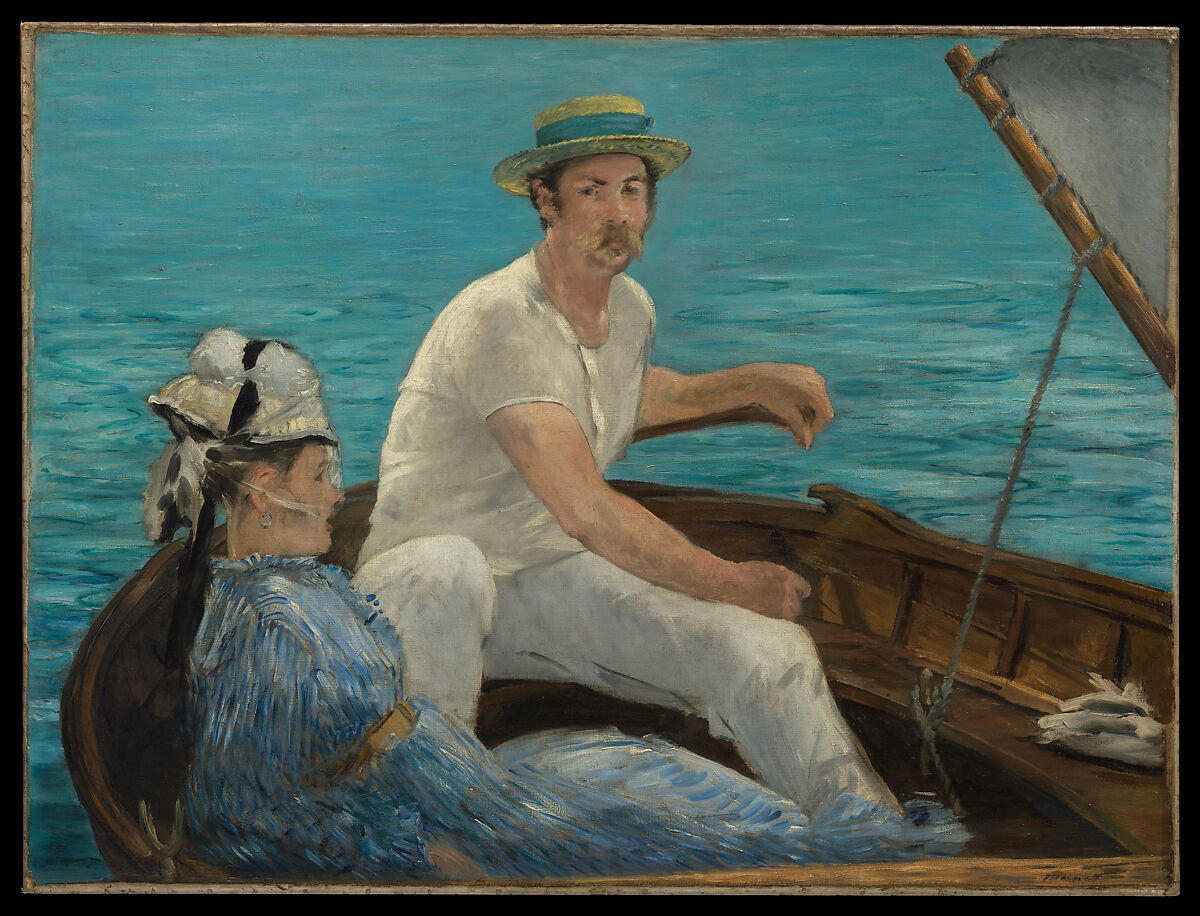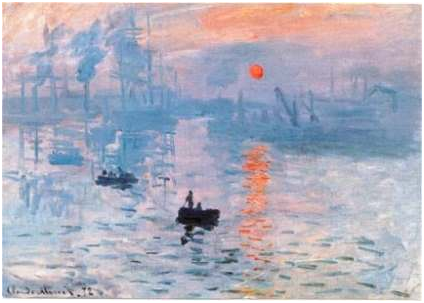- Home
- Art History
- Impressionism
Impressionism
... Let there be light and color ....

The Industrial Revolution changed the landscape for civilization as well as for painters. The idea of what a painting should be emanated from the Académie des Beaux-Arts. But a shift in sensibility led French painters to experiment with a new way of depicting the world. The shift toward Impressionism came out of like-minded artist meeting regularly in cafés and studios during the 1860s. The painters listed below were amongst the artists who explored depiction of contemporary life in fleeting moments of light and color. Instead of painting minute detail of prescribed themes, painters of the period tried to give the impression of a moment, a mood, a scene with bold brushstrokes to depict scenes of modern, everyday life.
Salon
The Salon de Paris was the official French art exhibit that would show paintings and sculptures, if approved. Artists who did not conform to the artistic conventions and expectations
of the French Academy, were rarely if ever approved by the jury, and as
a result found it almost impossible to make a successful career. A painter's success at the Salon, France's official art exhibit, meant
success in general as a painter. The selection committee preferred
highly finished academic paintings with historical, religious, or
mythological themes. But, most of the painters who leaned into the Impressionist themes, differing
from the Salon's preferences, were rejected by the Salon. So many works were rejected by the official art show that an these emerging painters set up an alternate exhibit - and became known as the "Salon des Refusés."
In spite of being an independent thinker, Manet sought to be recognized by the Salon. Although Manet did not identify himself as an Impressionist, Édouard Manet was considered to be the father of the Impressionist movement.
He
inspired paintings of modern life; yet, he refused to exhibit with the Impressionists. Still, Manet and other avant-garde thinkers met regularly in the Café Guerbois where they exchanged ideas about art.
The painters' shift to Impressionist themes challenged the rigidity of the Académie and the Salon. An emphasis on color, light, and quotidian scenes extended beyond France and established the painter's personal expression as a legitimate artistic form.
So, these painters began exhibiting their works apart from the Salon. These painters rejected the precision and idealism of the Académie and through their solidarity Impressionism reached its zenith in the latter half of the nineteenth century.
Then, painters continued to evolve, developing a new movement: Neo-Impressionism.
The Impressionism Artists
|
"They set out to create images of modern life as they saw it, capturing the impression of a passing moment and the fleeting effects of light. Impressionist paintings were greeted with derision when they were first exhibited in Paris in the 1870s because they looked unfinished to the nineteenth-century eye. Instead of creating a smooth surface where individual brushstrokes were blended to be invisible, the impressionists applied paint in bold colors and in broken brushwork. Their subject matter was as pioneering as their technique. They ventured out of their studios to observe the world around them and painted what they saw: landscapes around Paris, ballerinas adjusting their pumps. and laundresses at work, for example. Such scenes were deemed radical and improper at the time." (Farthing, Steven - Art, the Whole Story, 2018 Thames & Hudson Ltd., London) |
As materials became more convenient for painting on the move, artists were more inclined to paint outdoors, en plein air. New materials and tools such as screw-top paints, paint tubes, and portable easels allowed painters to set up in a a street, at a cafe, and at the seaside, where they painted non-Académie subjects. (The Académie preferred historical and moral scenes).

The name of this school of painting was taken from the title of a Claude Monet painting: Impression - Sunrise
The painters who would eventually become known as the Impressionists broke with the prevailing attitude of the Académie des Beaux-Arts. These modern painters sought to portray quotidian scenes and light. They explored how color and light dashes of bright color could portray the transitory moment of everyday life.
Questions:
- What is the name for painting outdoors, where Impressionists observed the most sunlight?
- What subjects did the Impressionists paint that the salon objected to?
- What characteristics of Impressionism distinguish it from Realism?
- What subjects would you paint today to echo the Impressionists?
- What colors and what kind of brushstrokes would you use for an Impressionist painting?


